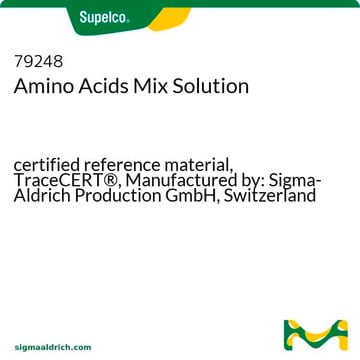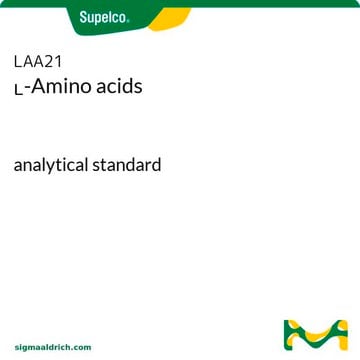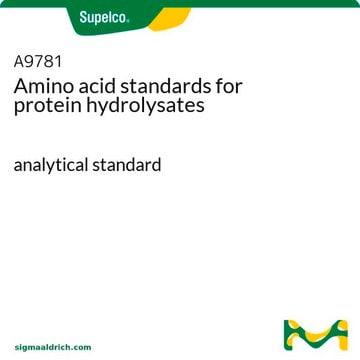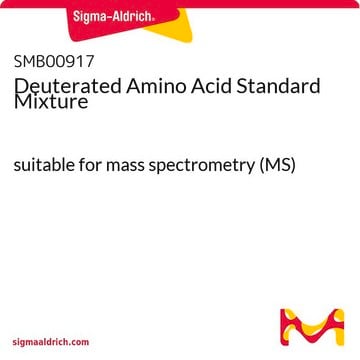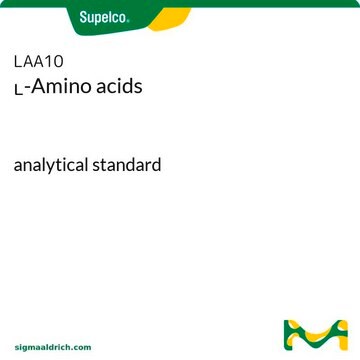AAS18
Amino Acid Standard
analytical standard
About This Item
Prodotti consigliati
Grado
analytical standard
Durata
limited shelf life, expiry date on the label
Classi chimiche degli analiti
amino acids, peptides, proteins
tecniche
HPLC: suitable
gas chromatography (GC): suitable
applicazioni
food and beverages
Formato
multi-component solution
Temperatura di conservazione
2-8°C
Applicazioni
- Determination of L- and D-amino acids and glycine by liquid chromatography-tandem mass spectrometry (LC-MS/MS) following their derivatization with chiral Marfey’s reagent
- High-performance liquid chromatography (HPLC) based amino acid analysis during the characterization of defatted rice bran (DRB) protein concentrate to evaluate its iron binding ability
- Development of a gas chromatography-mass spectrometry (GC-MS) procedure for the profiling of 112 amino-carboxylic metabolites in human urine samples using 1,1,1,2,2,3,3-heptafluorobutyl chloroformate for derivatization and liquid-liquid microextraction for sample treatment
- Non-enantiomeric detection and quantification of amino acids in their various forms— free, dissolved, particulate, and total, in natural water samples by HPLC coupled with fluorescence detection using a C18 column
Confezionamento
Componenti
- L-Alanine
- Ammonium chloride
- L-Arginine
- L-Aspartic acid
- L-Cystine
- L-Glutamic acid
- Glycine
- L-Histidine
- L-Isoleucine
- L-Leucine
- L-Lysine
- L-Methionine
- L-Phenylalanine
- L-Proline
- L-Serine
- L-Threonine
- L-Tyrosine
- L-Valine
Altre note
Prodotti correlati
Avvertenze
Warning
Indicazioni di pericolo
Consigli di prudenza
Classi di pericolo
Met. Corr. 1
Codice della classe di stoccaggio
8B - Non-combustible corrosive hazardous materials
Classe di pericolosità dell'acqua (WGK)
nwg
Punto d’infiammabilità (°F)
Not applicable
Punto d’infiammabilità (°C)
Not applicable
Choose from one of the most recent versions:
Certificati d'analisi (COA)
Don't see the Right Version?
If you require a particular version, you can look up a specific certificate by the Lot or Batch number.
Possiedi già questo prodotto?
I documenti relativi ai prodotti acquistati recentemente sono disponibili nell’Archivio dei documenti.
I clienti hanno visto anche
Il team dei nostri ricercatori vanta grande esperienza in tutte le aree della ricerca quali Life Science, scienza dei materiali, sintesi chimica, cromatografia, discipline analitiche, ecc..
Contatta l'Assistenza Tecnica.